
Atoms
Scope & Guideline
Fostering collaboration through open-access atomic research.
Introduction
Aims and Scopes
- Atomic Interactions and Dynamics:
Research in this area involves studying the collisions and interactions between atoms, ions, and molecules, including elastic and inelastic scattering processes. - Ionization Processes:
This includes investigations into the mechanisms of ionization caused by electron and positron impacts, as well as photon interactions with atoms. - Spectroscopy and Emission Studies:
The journal publishes studies related to atomic emission spectra, absorption spectra, and the effects of external fields on these phenomena. - Computational Methods in Atomic Physics:
Emphasis is placed on the development and application of computational techniques, such as density functional theory, coupled-cluster methods, and R-matrix calculations. - Plasma Physics and Applications:
Research related to atomic behavior in plasma environments, including studies on how atoms interact with their surroundings in various plasma states. - Quantum Technologies and Applications:
The journal explores the implications of quantum mechanics in atomic systems, particularly in the context of quantum computing and quantum information science.
Trending and Emerging
- Quantum Computing and Information:
Research exploring the use of atomic systems in quantum computing and information processing is on the rise, driven by advancements in technology and theoretical frameworks. - Machine Learning Applications in Atomic Physics:
The integration of machine learning techniques into atomic physics research is becoming increasingly popular, enabling new insights and efficiencies in data analysis and modeling. - High-Precision Measurements and Techniques:
There is a growing focus on high-precision measurements in atomic physics, particularly in the context of atomic clocks and fundamental constants. - Astrophysical Applications of Atomic Data:
Research connecting atomic physics with astrophysics, particularly in understanding stellar and cosmic phenomena, is gaining traction as new observational tools become available. - Plasma Interactions and Applications:
Studies on the interactions of atoms and ions in plasma environments are emerging, especially in the context of fusion research and space physics.
Declining or Waning
- Classical Models of Atomic Interactions:
There has been a noticeable decline in publications focused on classical models of atomic interactions, as research increasingly favors quantum mechanical approaches. - Basic Atomic Structure Studies:
Research that solely focuses on the basic structure of atoms, without incorporating interaction dynamics or advanced computational methods, has seen a decrease in interest. - Niche Applications of Atomic Physics:
Specific applications of atomic physics in areas such as traditional spectroscopy techniques have become less common, as interdisciplinary research and novel applications gain prominence.
Similar Journals

EUROPEAN PHYSICAL JOURNAL C
Pioneering Open Access to Groundbreaking FindingsEUROPEAN PHYSICAL JOURNAL C (EPJ C), published by SPRINGER, stands as a premier platform for innovative research in the domains of Physics and Engineering. With its Open Access policy established in 2014, EPJ C ensures that groundbreaking findings are readily available to the global scientific community, enhancing accessibility and collaboration. The journal, indexed in prestigious databases, boasts an impressive impact factor and ranks within the Q1 category for both Engineering and Physics and Astronomy, placing it among the top-tier journals in these fields. Celebrated for its rigorous peer-review process, EPJ C offers a wide-ranging scope encompassing various topics in particle physics, quantum field theory, and related interdisciplinary studies. Its consistent publication since 1991 has fostered a vibrant community of researchers dedicated to advancing knowledge and innovation in physics and engineering. Join the scholarly discussion and contribute to the cutting-edge research made possible through EPJ C's esteemed platform.

INTERNATIONAL JOURNAL OF MODERN PHYSICS A
Connecting scholars to the latest breakthroughs in modern physics.INTERNATIONAL JOURNAL OF MODERN PHYSICS A, published by WORLD SCIENTIFIC PUBL CO PTE LTD, stands as a pivotal platform in advancing the frontiers of research within the fields of Astronomy and Astrophysics, Atomic and Molecular Physics, and Nuclear and High Energy Physics. Established in 1989, this journal has systematically contributed to the scientific community, with a demonstrated impact as indicated by its Q2 category rankings across these critical disciplines in 2023. Researchers and professionals are encouraged to engage with its rigorous peer-reviewed content, fostering a deeper understanding of modern physics theories and experimental breakthroughs. Although the journal operates under a conventional access model, it remains a vital resource for those seeking to disseminate their findings and stay abreast of cutting-edge developments. With an emphasis on quality and breadth of research, the journal continues to attract submissions from leading physicists and scholars, enhancing its reputation as a key academic resource.
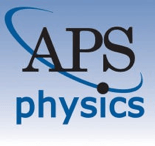
PHYSICAL REVIEW A
Illuminating the Path of Optical AdvancementsPHYSICAL REVIEW A, published by the American Physical Society, is a leading journal in the field of Atomic and Molecular Physics and Optics, boasting a Q1 category ranking in its area for 2023. With an ISSN of 2469-9926 and an E-ISSN of 2469-9934, this journal plays a pivotal role in disseminating high-quality research findings, theories, and methodologies that shape current understanding and advancements in the discipline. Although not an open-access journal, it remains highly accessible to professionals and academia through institutional subscriptions. The journal's impactful contributions are evident from its Scopus rank of #70 out of 224 in the field, placing it in the 68th percentile for scholarly impact. As a hub of innovative research and a vital resource for both students and seasoned researchers alike, PHYSICAL REVIEW A remains essential for those seeking to stay abreast of breakthroughs in atomic and molecular studies, as well as optics and photonics.
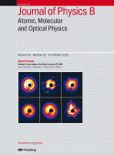
JOURNAL OF PHYSICS B-ATOMIC MOLECULAR AND OPTICAL PHYSICS
Charting New Territories in Atomic and Molecular ScienceJOURNAL OF PHYSICS B-ATOMIC MOLECULAR AND OPTICAL PHYSICS, published by IOP Publishing Ltd, stands as a key platform within the fields of atomic, molecular, and optical physics. With an impressive history spanning from 1988 to 2024, this journal is recognized for its high-quality research contributions, holding a Q2 ranking in both Atomic and Molecular Physics and Optics, and Condensed Matter Physics, as of 2023. While not an open-access journal, it continues to attract a broad readership and submissions due to its commitment to disseminating knowledge that is at the forefront of contemporary physics research. The journal's ISSN 0953-4075 and E-ISSN 1361-6455 signal its accessibility and relevance in academic discourse. As researchers, professionals, and students delve into the intricate phenomena of quantum mechanics and photonics, they will find pivotal studies and insights within these pages, reinforcing JOURNAL OF PHYSICS B's stature as an esteemed resource in the ever-evolving landscape of physics.
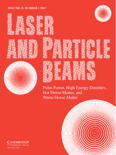
LASER AND PARTICLE BEAMS
Transforming Knowledge in Atomic and Molecular SciencesLASER AND PARTICLE BEAMS is a distinguished peer-reviewed journal published by Hindawi Ltd, specifically focusing on the fields of atomic and molecular physics, optics, condensed matter physics, and electrical and electronic engineering. With its commitment to advancing knowledge in these areas, the journal has transitioned to an Open Access model since 2021, ensuring that research findings are readily accessible to the global scientific community. Covering an extensive publication history from 1983 to 2023, it serves as an important platform for researchers, professionals, and students interested in the latest developments and applications of laser technologies and particle beam methodologies. Although currently categorized in Q4 for two of its areas and Q3 for electrical engineering in the 2023 base metrics, LASER AND PARTICLE BEAMS is positioned to foster innovative research and discussions within the laboratory and applied settings, contributing significantly to advancements in its respective disciplines. The journal encourages contributions that push the boundaries of knowledge and seeks to attract a diverse array of submissions to enhance its impact in the scientific community.

Nuclear Physics and Atomic Energy
Bridging gaps in nuclear and high-energy physics.Nuclear Physics and Atomic Energy is a reputable open-access journal that focuses on the fields of nuclear physics and high-energy physics, providing a forum for researchers, professionals, and students to share their findings and advancements. Published by the Institute of Nuclear Research, National Academy of Sciences of Ukraine, this journal has been committed to disseminating knowledge since its inception in 2006, ensuring that scientific advancements remain accessible to a global audience. With an ISSN of 1818-331X and an E-ISSN of 2074-0565, the journal features a diverse array of articles that span the continued exploration and application of nuclear phenomena. Although currently categorized in the Q4 quartile for Nuclear and High Energy Physics in 2023, the journal is steadily working towards increasing its impact and engagement within the academic community. With a Scopus rank of #74 out of 87 in its category, it serves as a valuable resource for advancing crucial research in a vital scientific area. Researchers are encouraged to contribute their innovative studies to foster collaboration and knowledge sharing in this dynamic field.

EUROPEAN PHYSICAL JOURNAL A
Championing Open Access for Cutting-edge ResearchEUROPEAN PHYSICAL JOURNAL A (EPJ A), published by Springer, is a premier journal in the field of Nuclear and High Energy Physics, dedicated to fostering innovative research and scholarly communication within the scientific community. With an impressive impact factor that reflects its significant contribution to the discipline, EPJ A ranks in the Q1 category and boasts a Scopus rank of 24 out of 87, placing it in the 72nd percentile of its field for 2023. This journal, with its ISSN 1434-6001 and E-ISSN 1434-601X, embraces a commitment to open access, ensuring that cutting-edge research is accessible to a global audience. With coverage from 1998 to 2024, EPJ A continues to be a vital resource for researchers, professionals, and students alike, promoting collaboration, knowledge sharing, and advancements in the vast landscape of nuclear physics and high-energy interactions. Located in Germany with a representative address in New York City, this journal serves as a bridge for international scientific discourse.

FEW-BODY SYSTEMS
Connecting Theory and Experiment in Atomic PhysicsFEW-BODY SYSTEMS is a distinguished journal published by Springer Wien, dedicated to advancing the field of Atomic and Molecular Physics and Optics. With an ISSN of 0177-7963 and an E-ISSN of 1432-5411, this scholarly periodical has been a vital resource since its inception in 1986, with a continued commitment to disseminating high-quality research up to 2024. Recognized in the Q2 quartile in its category and ranked 132 out of 224 in Scopus within the relevant fields, FEW-BODY SYSTEMS provides a platform for innovative studies that explore the complexities of few-body quantum systems, fostering discussions that enhance scientific understanding and technological advancement. Based in Vienna, Austria, this journal reflects a global scholarly community's engagement with pressing theoretical and experimental topics, contributing significantly to the ongoing discourse in physics and optics. Although it does not currently offer open access options, it remains a reputable choice for researchers, professionals, and students eager to delve into the intricate dynamics of few-body interactions.
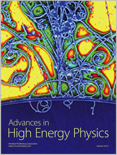
Advances in High Energy Physics
Pioneering Insights in the Realm of High Energy PhysicsAdvances in High Energy Physics, published by HINDAWI LTD, is a premier open-access journal dedicated to the progressive field of Nuclear and High Energy Physics. With an ISSN of 1687-7357 and an E-ISSN of 1687-7365, this journal has been at the forefront of scientific discourse in high energy physics since its inception in 2007. The journal is notable for its impact within the community, currently holding a Q2 ranking in 2023 and positioned at #36 out of 87 in its category according to Scopus, highlighting its significant contribution to ongoing research and advancement in the field. Its accessible nature enables researchers, professionals, and students to engage with cutting-edge findings that shape our understanding of the universe. Spanning publications from 2010 through 2024, Advances in High Energy Physics serves as an invaluable resource for those looking to stay informed about the latest developments and methodologies in high energy physics across the globe.
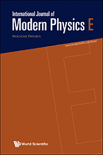
INTERNATIONAL JOURNAL OF MODERN PHYSICS E
Exploring the Universe: Insights from Modern PhysicsThe INTERNATIONAL JOURNAL OF MODERN PHYSICS E, published by WORLD SCIENTIFIC PUBL CO PTE LTD, serves as a distinctive platform for the dissemination of high-quality research in the fields of Nuclear and High Energy Physics, as well as Physics and Astronomy. With an ISSN of 0218-3013 and covering a timeline from 1996 to 2024, the journal has established itself within the academic community, achieving a respectable Q3 ranking in its respective categories for 2023, underscoring its commitment to advancing knowledge in modern physics. Although it operates without an open access model, the journal's curated content is accessible to a wide audience of researchers, professionals, and students engaged in cutting-edge physics. Set in Singapore, this journal not only contributes to scholarly discussions but also fosters a global collaboration among physicists, making it an invaluable resource for those seeking to deepen their understanding and contribute to ongoing dialogues in the scientific community.